Chapter 2 Electrical Components and Circuits
The purpose of this chapter is to discuss basic direct current (dc) circuit components in preparation for the two following chapters that deal with integrated circuits and microcomputers in instruments for chemical analysis.
Some basic direct current circuits and how they are used in making current, voltage, and resistance measurements will be considered.
The general definition of a circuit is a closed path that may be followed by an electric current.
A galvanometer is a device with a rotating indicator that will rotate from its equilibrium position when a current passes through it. A galvanometer has a negligible resistance. 
Figure 1. Ampermeter
An ampermeter (ammeter) is a galvanometer with a calibrated current scale for its indicator and a bypass resistor (called a shunt) for a fixed fraction of the current, shown in Figure 1. Many ammeters have several selectable shunts which provide their corresponding current meter ranges. Typically, ammeters can be found with calibrated ranges of 1 micro-A for full scale deflection up to 1000 A for full scale deflection, and in multiples of 10 between these extremes.
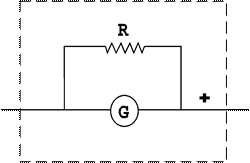 Figure 2. Voltmeter
Figure 2. Voltmeter
A voltmeter, shown in Figure 2, is just a calibrated galvanometer with a series resistor so that the total resistance of the path is increased. The galvanometer range is calibrated for the current Ig passing through it. This scale is adjusted to display the potential difference between points A and B, (voltage) by substituting Vg values for Ig on the scale where Vg = Ig Rg and Rg is the total resistance of the voltmeter. Voltmeters may have more than one calibrated scale which can be selected by changing the resistance Rg.
Current in a circuit is the flow of the positive charge from a high potential (+) to a low potential (-). Meters are labeled to indicate the proper direction of current flow through them. A reverse flow of DC current may destroy a meter.
Electrical charge will not move through a conducting path unless there is a potential difference between the ends of the conductors. All materials resist the flow of current through them, requiring work to be done to move the charge through the material. The source of energy in a circuit which provides the energy to move the charge through the circuit can be a battery, photocell, or some other power supply.
An electrical circuit is a circuitous path of wire and devices. A schematic drawing of a real circuit utilizes the symbols shown in Figure 3.
 Figure 3. Circuit Symbols
Figure 3. Circuit Symbols
An example, Figure 4, shows a circuit with a DC. power supply in a series with a resistor, a parallel branch with a resistor and voltmeter, and an ammeter.
 Figure 4. Example of an Electric Circuit.
Figure 4. Example of an Electric Circuit.
BASIC ELECTRIC CIRCUIT
The flashlight is an example of a basic electric circuit. It contains a source of electrical energy (the dry cells in the flashlight), a load (the bulb) that changes the electrical energy into a more useful form of energy (light), and a switch to control the energy delivered to the load.
A load is any device through which an electrical current flows and which changes this electrical energy into a more useful form. The following are common examples of loads:
A light bulb (changes electrical energy to light energy).
An electric motor (changes electrical energy into mechanical energy).
A speaker in a radio (changes electrical energy into sound).
A source is the device that furnishes the electrical energy used by the load. It may be a simple dry cell (as in a flashlight), a storage battery (as in an automobile), or a power supply (such as a battery charger). A switch permits control of the electrical device by interrupting the current delivered to the load.

Schematic of a Basic Circuit, the Flashlight
Ohm’s law describes the relationship among potential, resistance and current in a resistive series circuit. In a series circuit, all circuit elements are connected in sequence along a unique path, head to tail, as are the battery and three resistors shown in Figure 2-1. Ohm’s Law may be written as:
Where V is the potential difference in volts between two points in a circuit, R is the resistance between the two points in ohms, and I is the resulting current in amperes.
diagrams for determining resistance and voltage in a basic circuit, respectively.

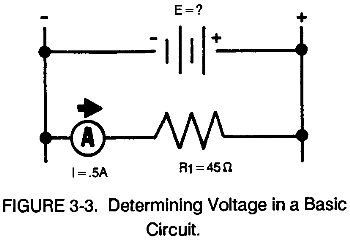
Using Ohms's Law, the resistance of a circuit can be determined knowing only the voltage and the current in the circuit. In any equation, if all the variables (parameters) are known except one, that unknown can be found. For example, using Ohm's Law, if current (I) and voltage (E) are known, you can determine resistance (R), the only parameter not known:
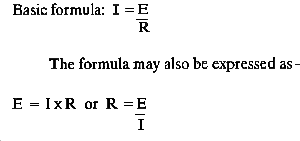
.
2) A steady increase in resistance, in a circuit with constant voltage, produces a progressively (not a straight-line if graphed) weaker current. |
|
In simpler terms, Ohm’s Law means: |
|
|
|
TECHNICAL DEFINITION ALERT!
Ohm's Law is a formulation of the relationship of voltage, current, and resistance, expressed as:

Where:
V is the Voltage measured in volts
I is the Current measured in amperes
R is the resistance measured in Ohms
Therefore:
Volts = Amps times Resistance
Ohms Law is used to calculate a missing value in a circuit.

In this simple circuit there is a current of 12 amps (12A) and a resistive load of 1 Ohm (1W). Using the first formula from above we determine the Voltage:
V = 12 x 1 : V = 12 Volts (12V)
If we knew the battery was suppling 12 volt of pressure (voltage), and there was a resistive load of 1 Ohm placed in series, the current would be:
I = 12 / 1 : I = 12 Amps (12A)
If we knew the battery was suppling 12V and the current being generated was 12A, then the Resistance would be:
R = 12/12 : R = 1W
Note: Remember a battery is not measured in amperage as is commonly believed with beginners to electronics. The battery supplies the pressure that creates the flow (current) in a given circuit. The amperage rating on a battery is "How long the battery will last for one hour while driving a circuit of that amperage". It is measured in Amperage-Hours. So a 1000mAh would last for 1 hour in a one amp circuit. (1000mAh is 1A for one hour) |
An easy way to remember the formulas is by using this diagram.
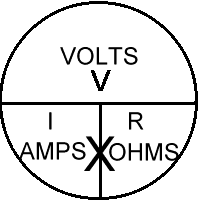
To determine a missing value, cover it with your finger. The horizontal line in the middle means to divide the two remaining values. The "X" in the bottom section of the circle means to multiply the remaining values.
• If you are calculating voltage, cover it and you have I X R left (V= I times R).
• If you are calculating amperage, cover it, and you have V divided by R left (I=V/R).
• If you are calculating resistance, cover it, and you have V divide by I left (R=V/I).
Note: The letter E is sometimes used instead of V for voltage.
Kirchhoff’s Law
Kirchhoff’s current law states that the algebraic sum of currents around any point in a circuit is zero. Kirchhoff’s voltage law states that the algebraic sum of the voltages around a closed electrical loop is zero.
![]() Kirchhoff's Voltage Law
Kirchhoff's Voltage Law
Kirchhoff's Voltage Law (or Kirchhoff's Loop Rule) is a result of the electrostatic field being conservative. It states that the total voltage around a closed loop must be zero. If this were not the case, then when we travel around a closed loop, the voltages would be indefinite. So In Figure 1 the total voltage around loop 1 should sum to zero, as does the total voltage in loop2. Furthermore, the loop which consists of the outer part of the circuit (the path ABCD) should also sum to zero. |
|
We can adopt the convention that potential gains (i.e. going from lower to higher potential, such as with an emf source) is taken to be positive. Potential losses (such as across a resistor) will then be negative. However, as long as you are consistent in doing your problems, you should be able to choose whichever convention you like. It is a good idea to adopt the convention used in your class.
Power Law
The power law states that the power in watts dissipated in a resistive element is given by the product of the current in amperes and the potential difference across the resistance in volts:
And substituting Ohm’s law gives:
P = I2R = V2/R
Basic Direct Current Circuits
The Schematic Diagram
The schematic diagram consists of idealized circuit elements each of which represents some property of the actual circuit. The Figure shows some common circuit elements encountered in DC circuits. A two-terminal network is a circuit that has only two points of interest, say A and B.

Figure: Common circuit elements encountered in DC circuits: a) ideal voltage source, b) ideal current source and c) resistor.
Two types of basic dc circuits will be described; series resistive circuits and parallel resistive circuits.
Series Circuits
Figure 2-1 shows a basic series circuit, which consists of a battery, a switch, and three resistors in series.
Figure 2-1 (Principles of Instrumental Analysis)
The current is the same at all points in a series circuit, that is:
I = I1 = I2 = I3 = I4
Application of Kirchhoff’s voltage law to the circuit in Figure 2-1 yields:
V = V1 + V2 + V3
The total resistance, Rs, of a series circuit is equal to the sum of the resistances of the individual components.
Rs = R1 + R2 + R3
Parallel Circuits
Figure 2-2 shows a parallel dc circuit.
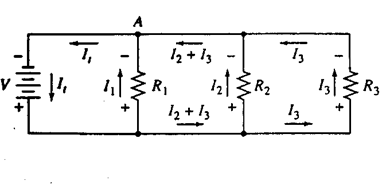
Figure 2-2 (Principles of Instrumental Analysis)
Applying Kirchhoff’s current law, we obtain:
It = I1 + I2 + I3
Applying Kirchhoff’s voltage law to this circuit gives three independent equations.
V = I1R1
V = I2R2
V = I3R3
Substitution and division by V gives:
1/ Rp = 1/R1 + 1/R2 + 1/R3
Since the conductance, G, of a resistor, R, is given by G = 1/R:
Gp = G1 + G2 + G3
Conductances are additive in a parallel circuit rather than the resistance.
In conclusion, the most important things to remember about the differences between resistors in series and parallel are as follows:
Resistors in series have the same current and
Resistors in parallel have the same voltage.
2B SEMICONDUCTOR DIODES
OBJECTIVES:
Learning objectives are stated at the beginning of each chapter. These learning objectives serve as a preview of the information you are expected to learn in the chapter. The comprehensive check questions are based on the objectives. The learning objectives are listed below.
Upon completion of this chapter, you should be able to do the following:
A diode is a nonlinear device that has greater conductance in one direction than in another. Useful diodes are manufactured by forming adjacent n-type and p-type regions within a single germanium or silicon crystal: the interface between these regions is termed a pn junction.
Figure 2-3a is a cross section of one type of pn junction, which is formed by diffusing an excess of a p-type impurity, such as indium, into a minute silicon chip that has been doped with an n-type impurity, such as antimony. A junction of this kind permits movement of holes from the p region into the n region and movement of electrons in the in the reverse direction. As holes and electrons diffuse in the opposite direction, a region is created that is depleted of mobile charge carriers and thus has very high resistance. This region is referred to as the depletion region. Because there is a separation of charge across the depletion region, a potential difference develops across the region that causes a migration of holes and electrons in the opposite direction. The current that results from the diffusion of holes and electrons is balanced by the current produced by migration of the carriers in the electric field, thus there is no net current. The magnitude of potential difference across the depleted region depends upon the composition of the materials used in the pn junction. For silicon diodes, the potential difference is about 0.6V, and for germanium, it is about 0.3V. When a positive potential is applied across a pn junction, there is little resistance to current in the direction of the p-type to the n-type material. On the other hand, the pn junction offers a high resistance to the flow of holes in the opposite direction and is called a current rectifier.
Figure 2-3b illustrates the symbol for a diode. The arrow points in the direction of low resistance to positive current. The triangular portion of the diode symbol may be imagined to point in the direction of current in a conducting diode.
Figure 2-3c shows the mechanism of conduction of charge when the p region is made positive with respect to the n region by application of a potential; this process is called forward biasing. The holes in the p region and the excess electrons in the n region move under the influence of the electric field toward the junction, where they combine and annihilate each other. The negative terminal of the battery injects new electrons into the n region, which can then continue the conduction process; the positive terminal extracts electrons from the p region, creating new holes that are free to migrate towards the pn junction.
Figure 2-3d shows when the diode is reverse-biased and the majority carriers in each region drift away from the junction to form the depletion layer, which contains few charges. Only the small concentration of minority carriers present in each region drifts toward the junction and creates a current.
Figure 1. Ampermeter
An ampermeter (ammeter) is a galvanometer with a calibrated current scale for its indicator and a bypass resistor (called a shunt) for a fixed fraction of the current, shown in Figure 1. Many ammeters have several selectable shunts which provide their corresponding current meter ranges. Typically, ammeters can be found with calibrated ranges of 1 micro-A for full scale deflection up to 1000 A for full scale deflection, and in multiples of 10 between these extremes.
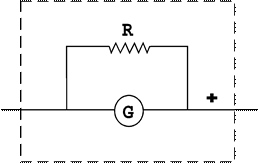 Figure 2. Voltmeter
Figure 2. Voltmeter
A voltmeter, shown in Figure 2, is just a calibrated galvanometer with a series resistor so that the total resistance of the path is increased. The galvanometer range is calibrated for the current Ig passing through it. This scale is adjusted to display the potential difference between points A and B, (voltage) by substituting Vg values for Ig on the scale where Vg = Ig Rg and Rg is the total resistance of the voltmeter. Voltmeters may have more than one calibrated scale which can be selected by changing the resistance Rg.
Current in a circuit is the flow of the positive charge from a high potential (+) to a low potential (-). Meters are labeled to indicate the proper direction of current flow through them. A reverse flow of DC current may destroy a meter.
Electrical charge will not move through a conducting path unless there is a potential difference between the ends of the conductors. All materials resist the flow of current through them, requiring work to be done to move the charge through the material. The source of energy in a circuit which provides the energy to move the charge through the circuit can be a battery, photocell, or some other power supply.
An electrical circuit is a circuitous path of wire and devices. A schematic drawing of a real circuit utilizes the symbols shown in Figure 3.
Types of electrical devices and their uses:
Bar Code Devices (196 companies) Devices such as scanners and verifiers, used to decode (read) the bar codes stamped on products.
Batteries and Accessories (396 companies) Devices that convert stored energy into electrical current; the two main types are chemical batteries and physical batteries such as solar cells, nuclear energy and thermal batteries.
Connectors (714 companies) Components used to conduct and transfer signals (electrical, optical, rf, etc.) or power from one cable to another.
Data Input Devices (208 companies) Devices such as a keyboard or mouse, used to interact with other devices or computers for the purpose of inputting data.
Electrical and Electronics Fasteners and Hardware (95 companies) Small components and hardware for electrical and electronic applications.
Electrical Distribution and Protection Equipment (1668 companies) Equipment used to distribute power and protect other equipments and systems from current or voltage surges.
Electrical Testing Equipment (200 companies) Electrical testing instruments for current leakage and insulation resistance measurements.
Enclosures (2785 companies) Used for enclosing or containing electrical, electronic, or mechanical components, or to provide protection for their operators.
Fans and Electronic Cooling (765 companies) Devices and equipment used to regulate temperature by removing heat from electrical and electronic components.
Fuses (169 companies) Fuses protect electrical devices from overcurrents and short circuits that occur in improperly operating circuits.
Industrial Counters and Timers (234 companies) Industrial counters and industrial timers are used in a variety of applications including process timing, process control, and unit counting.
Magnets (194 companies) A magnet is simply any material capable of attracting iron and producing a magnetic field outside itself, either naturally or induced.
Meters, Readouts and Indicators (776 companies) Any type of equipment used to display information in various formats including, digital readouts, indicator lights or panel meters.
Motors (818 companies) All types of rotary and linear motors, including AC, DC, servo, stepper, induction, hydraulic, pneumatic motors.
Passive Electronic Components (2211 companies) Passive electronic components such as resistors, inductors and capacitors that do not require power to operate.
Power Generation and Storage (605 companies) Products and accessories related to power generation and storage.
Power Supplies and Conditioners (1713 companies) Devices that produce constant voltage and stabilize voltage levels and signals.
Relays and Relay Accessories (326 companies) Relays are electromechanical switches in which the variation of current in one electric circuit controls the flow of electricity in another circuit.
Surge Suppressors (184 companies) Electrical devices used to detect and control high voltage or current surges in order to protect equipments or systems.
Switches (582 companies) Devices used to route signals by allowing or preventing the signal flow when in closed or open position.
Transformers (516 companies) Transformers transfer electrical energy from one electric circuit to another, typically by the principles of electromagnetic induction. Transformer types include potential, current, step-up, step-down, distribution and others.
Wires, Cables, and Accessories (1816 companies) Wires, cables, and accessories used to transmit electrical power or signals.
![]()
REFERENCES:
“Direct Current Circuits.” http://pneuma.phys.ualberta.ca/~gingrich/phys395/notes/node2.html
“Field effect transistors (FETs) as transducers in electrochemical sensors.”
http://www.ch.pw.edu.pl/~dybko/csrg/isfet/chemfet.html
Skoog, Holler, and Nieman. Principles of Instrumental Analysis. 5th ed. Orlando: Harcourt Brace & Co., 1998.
Shul’ga AA, Koudelka-Hep M, de Rooij NF, Netchiporouk LI. “Glucose sensitive enzyme field effect transistor using potassium ferricyanide as an oxidizing substrate.” Analytical Chemistry. 15 Jan. 1994.
Thompson JM, Smith SC, Cramb R, Hutton. “Clinical evaluation of sodium ion selective field effect transistors for whole blood assay.” Annals of Clinical Biochemistry. 31 Jan. 1994.
Source: http://webpage.pace.edu/dnabirahni/rahnidocs/Electrical%20Components%20and%20Circuits.doc
Web site to visit: http://webpage.pace.edu
Author of the text: indicated on the source document of the above text
If you are the author of the text above and you not agree to share your knowledge for teaching, research, scholarship (for fair use as indicated in the United States copyrigh low) please send us an e-mail and we will remove your text quickly. Fair use is a limitation and exception to the exclusive right granted by copyright law to the author of a creative work. In United States copyright law, fair use is a doctrine that permits limited use of copyrighted material without acquiring permission from the rights holders. Examples of fair use include commentary, search engines, criticism, news reporting, research, teaching, library archiving and scholarship. It provides for the legal, unlicensed citation or incorporation of copyrighted material in another author's work under a four-factor balancing test. (source: http://en.wikipedia.org/wiki/Fair_use)
The information of medicine and health contained in the site are of a general nature and purpose which is purely informative and for this reason may not replace in any case, the council of a doctor or a qualified entity legally to the profession.
The texts are the property of their respective authors and we thank them for giving us the opportunity to share for free to students, teachers and users of the Web their texts will used only for illustrative educational and scientific purposes only.
All the information in our site are given for nonprofit educational purposes